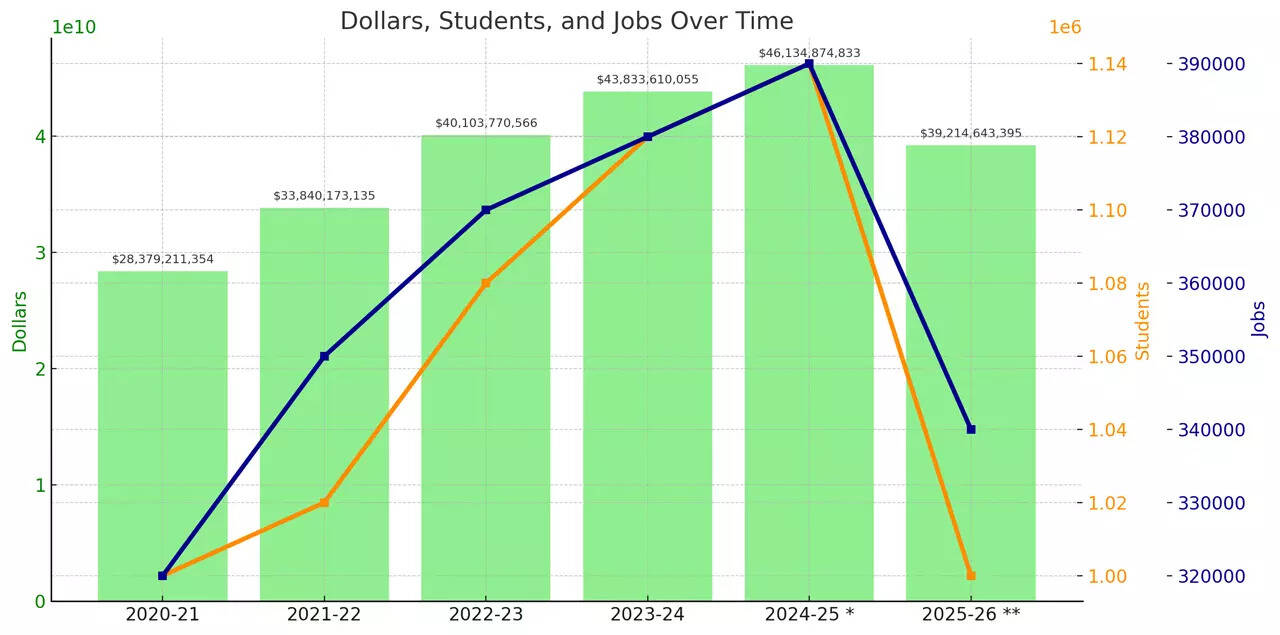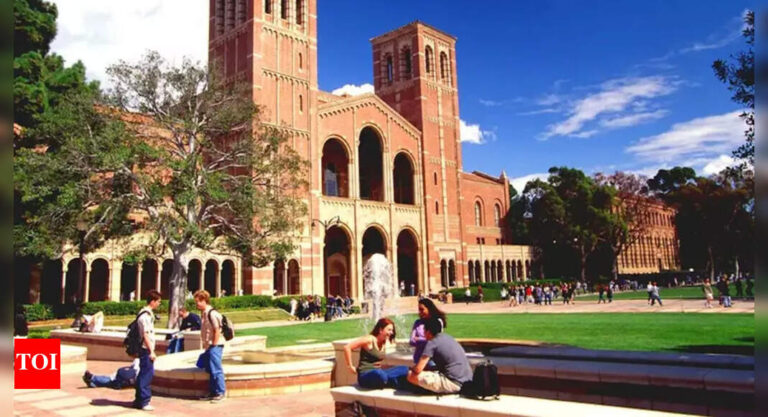
A new analysis forecasts a significant downturn in international student commencements in the US this fall, with projected declines of 30% to 40% for September 2025. The data, jointly produced by NAFSA and research consultancy JB International, highlights a potential loss of up to 150,000 international students, driven largely by visa processing backlogs during the peak May–August window.The projected decline would translate into a 15% reduction in international enrolments for the 2025/26 academic year compared to the previous year. According to the NAFSA/JB International study, this would have an estimated economic impact of US$7 billion and affect over 60,000 jobs across the country.Visa delays and travel restrictions behind enrolment declineThe study attributes the projected decline to four primary factors: the suspension of student visa interviews from May 27 through June 18, limited visa appointment availability after that suspension was lifted, a softening trend in visa issuance through early 2025, and travel restrictions impacting multiple sending markets.As per data reported by the ICEF, F-1 visa issuance declined by 12% from January through April 2025 compared to the same period in 2024. The drop was more severe in May 2025, when F-1 issuances fell by 22%. JB International CEO Jason Baumgartner noted that “we might be looking at as much as an 80–90% decline in visa issuance for the month of June,” due to the pause and delays in restoring full processing.NAFSA CEO Fanta Aw stated that, “The issue doesn’t seem to be one of capacity at US embassies, because we see high volumes of visas [across all categories] issued,” as quoted by the ICEF. “Where the problem seems to reside is around international students in particular.”Travel bans affecting major sending countriesThe report also cited new US travel policies as a contributing factor. On June 4, the US administration implemented a full travel ban for 12 countries and a partial ban on citizens from another seven. Additionally, the government indicated it was considering similar restrictions on travelers from 36 more countries, including key student markets in Africa.NAFSA also flagged limited appointment availability in countries such as India, China, Nigeria, and Japan, all of which represent major sources of international students for US institutions.Actual and projected international student enrolment and economic impact in the United States, 2020/21–2025/26.

• Green bars represent total dollars.• Orange line (with squares) shows the number of students.• Dark blue line (with squares) indicates the number of jobs.Source: NAFSA/JB InternationalEconomic and enrolment implicationsThe following table summarizes the projected changes and their estimated impacts:
Stakeholders urge government interventionNAFSA has called on the US Department of State to expedite visa processing and prioritize F-1, M-1, and J-1 applicants. In addition, the association has urged that these categories be exempted from travel bans, while maintaining standard security vetting procedures.On July 24, 15 Members of Congress issued a letter to Secretary of State Marco Rubio, requesting clarification on what the department is doing to resolve visa backlogs, particularly in India. “We are dismayed at the possibility that many of these bright young individuals may be blocked… from continuing their education and research in the United States,” the letter states, as reported by the ICEF.TOI Education is on WhatsApp now. Follow us here.







